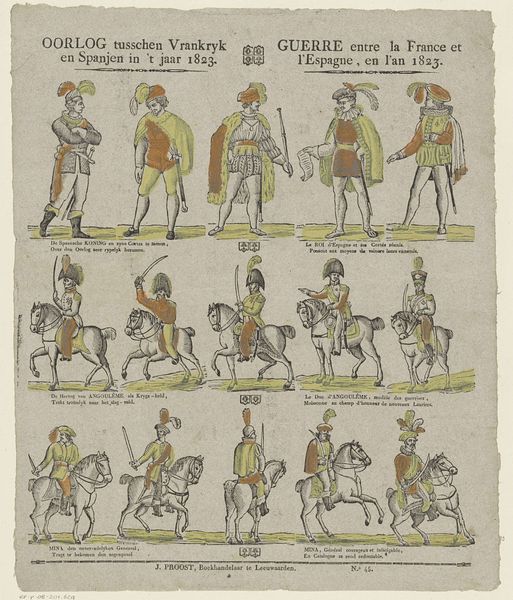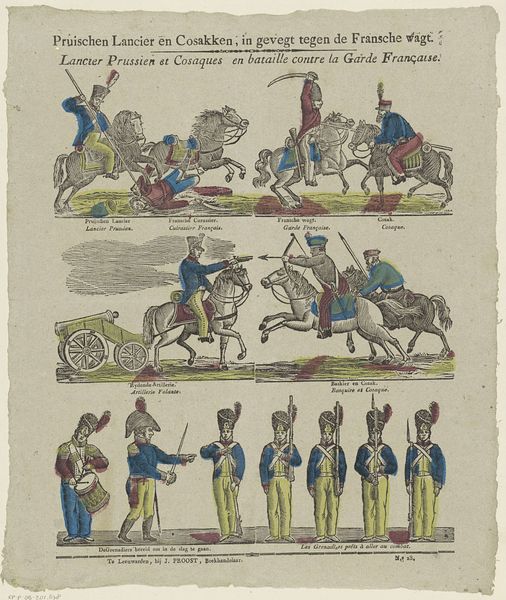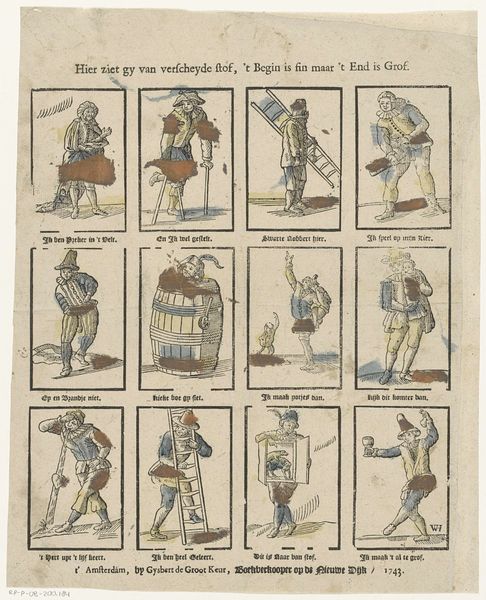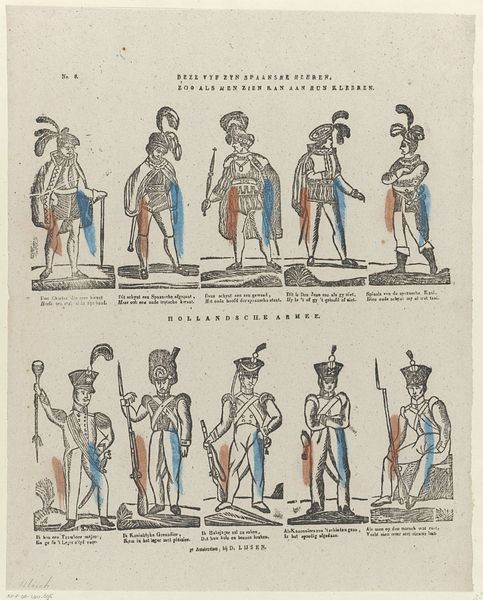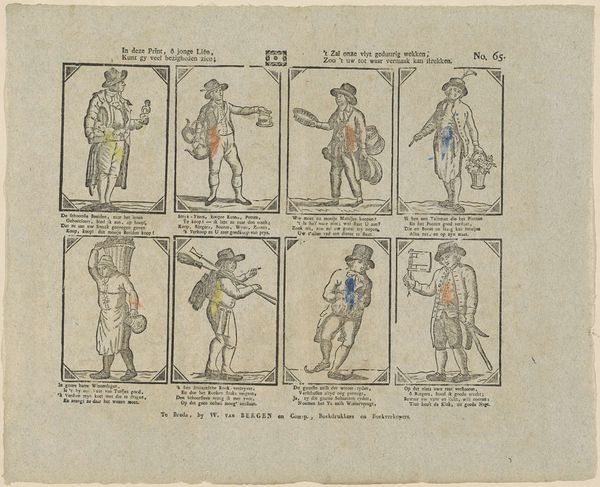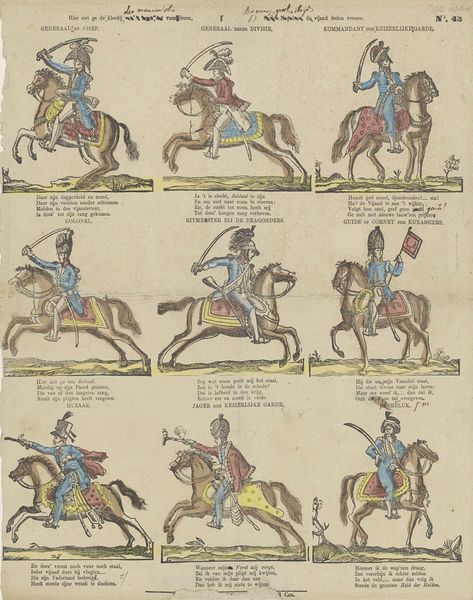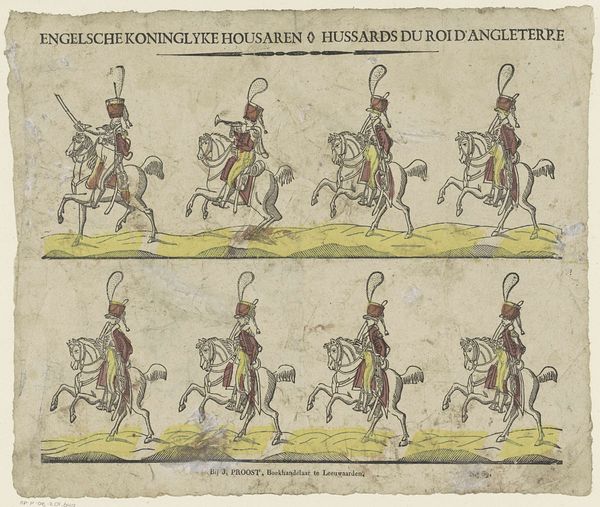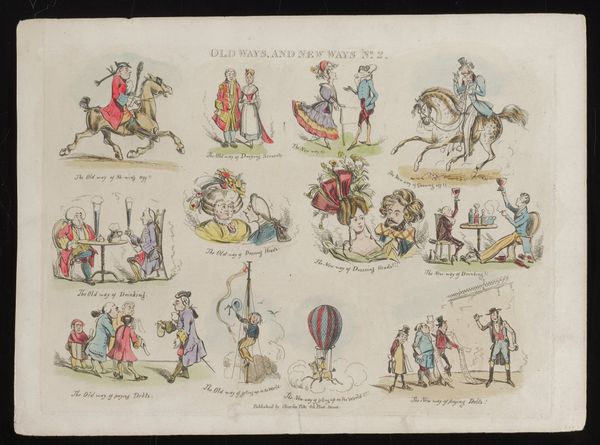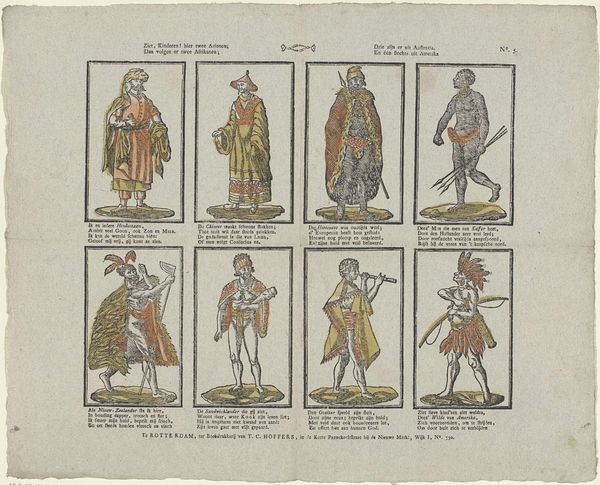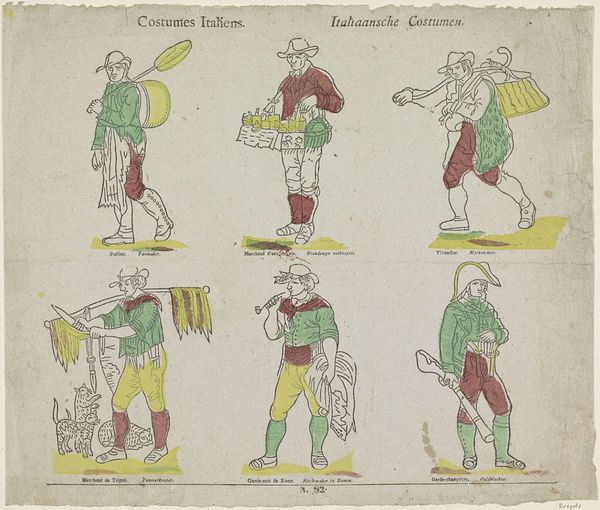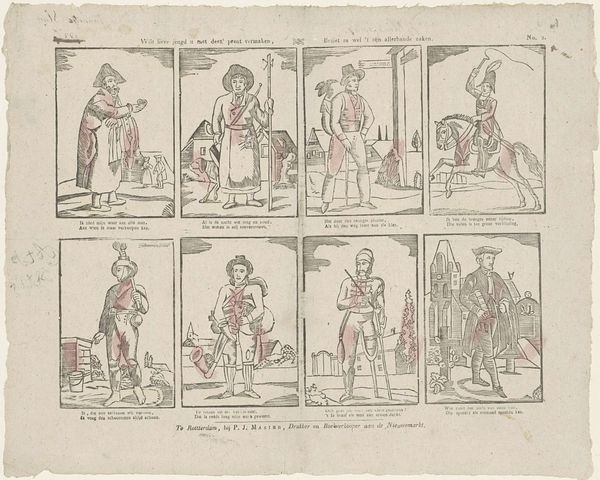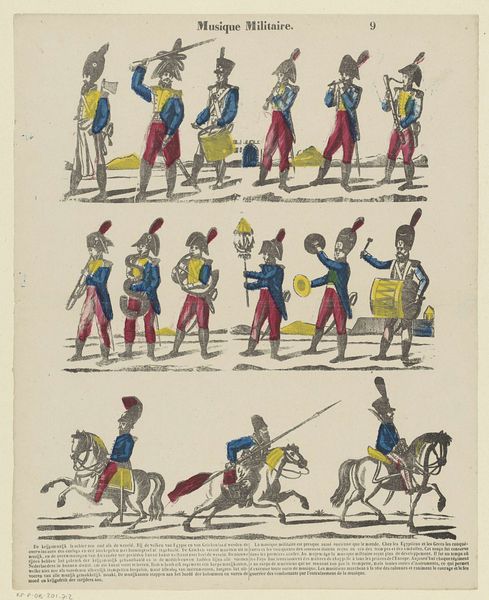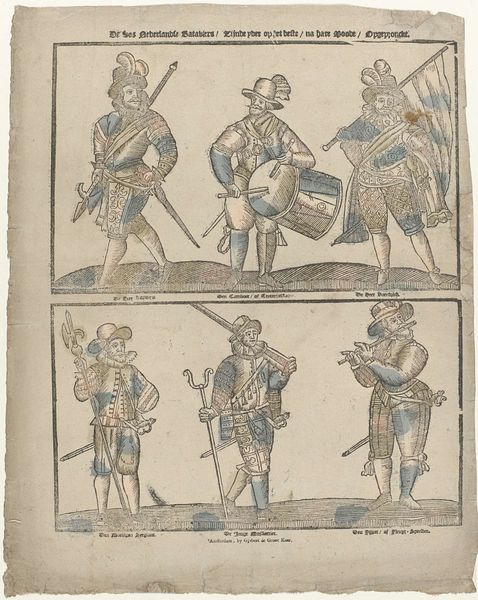
Oorlog tusschen Vrankryk / en Spanjen in 't jaar 1823 / Guerre entre la France et / l'Espagne, en l'an 1823 1800 - 1833
0:00
0:00
drawing, print, watercolor
#
drawing
#
narrative-art
# print
#
figuration
#
watercolor
#
romanticism
#
watercolour illustration
#
history-painting
Dimensions: height 392 mm, width 331 mm
Copyright: Rijks Museum: Open Domain
Curator: Let’s consider this work, "Oorlog tusschen Vrankryk / en Spanjen in 't jaar 1823 / Guerre entre la France et / l'Espagne, en l'an 1823," dating from 1800-1833 by F. Holtkamp. It’s a drawing and print with watercolor, housed here at the Rijksmuseum. Editor: It's really interesting to see a war depicted through what looks almost like a fashion plate. All these figures are lined up, almost like a catalog of uniforms. What are your initial thoughts on this? Curator: This image, appearing as a harmless "fashion plate," is actually steeped in political messaging. Consider the title; it uses both Dutch and French, indicative of a very specific audience. But the conflict itself – France's intervention in Spain – speaks volumes about power, legitimacy, and the restoration of monarchical authority in the wake of the Napoleonic era. Who benefits from sanitizing war like this? Editor: I hadn't thought of it that way, as active sanitization! I suppose it makes sense; depicting it so neatly, with all the players clearly labeled, certainly removes some of the messiness of conflict. Do you see any hints of critique in its construction? Curator: Critique is subtle here, maybe absent. But what interests me is thinking about its reception. Was this meant to legitimize the intervention? To reassure a Dutch audience perhaps worried about French dominance? Notice how the figures are individualized yet also presented as types. It flattens the complexities of war to personalities and national identities. Editor: That’s fascinating. So, we're seeing Romanticism at play here, not necessarily to evoke grand emotions in the viewer but to make a clear political point about France and Spain? Curator: Exactly. And the seemingly objective "recording" of these figures helps to mask what is essentially a propaganda piece, obscuring the human cost and the social disruption inherent in war. We must question the very act of visually cataloging conflict. Editor: This has made me rethink the whole purpose of the image. Thanks, I'm looking at it with fresh eyes. Curator: Indeed. Art like this reveals how visual culture plays an active role in shaping, justifying, and perpetuating particular political and social orders.
Comments
No comments
Be the first to comment and join the conversation on the ultimate creative platform.
